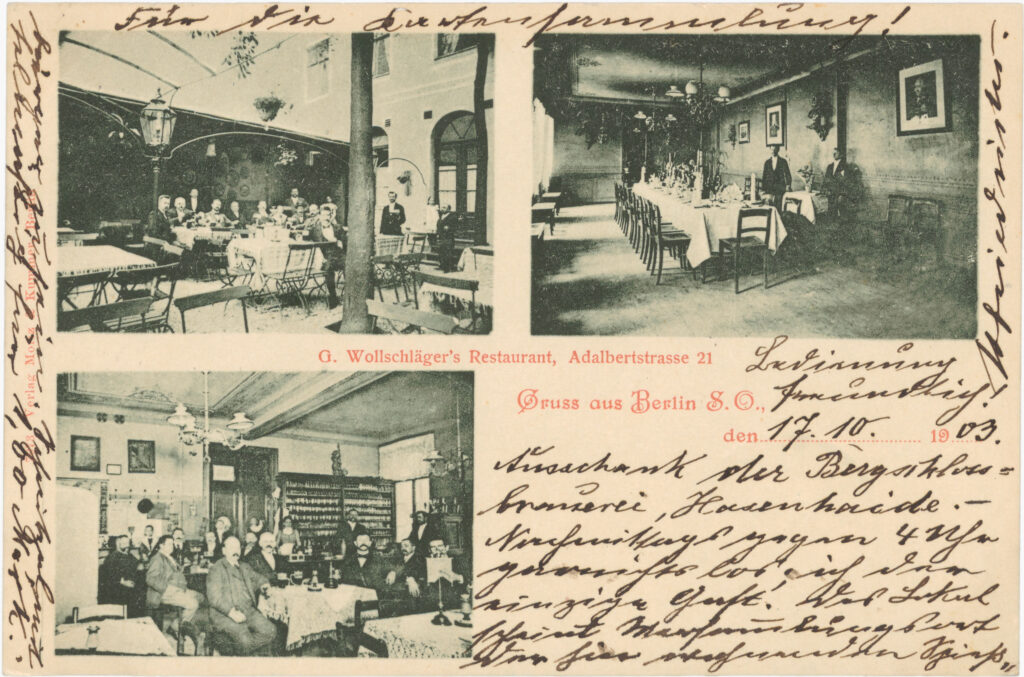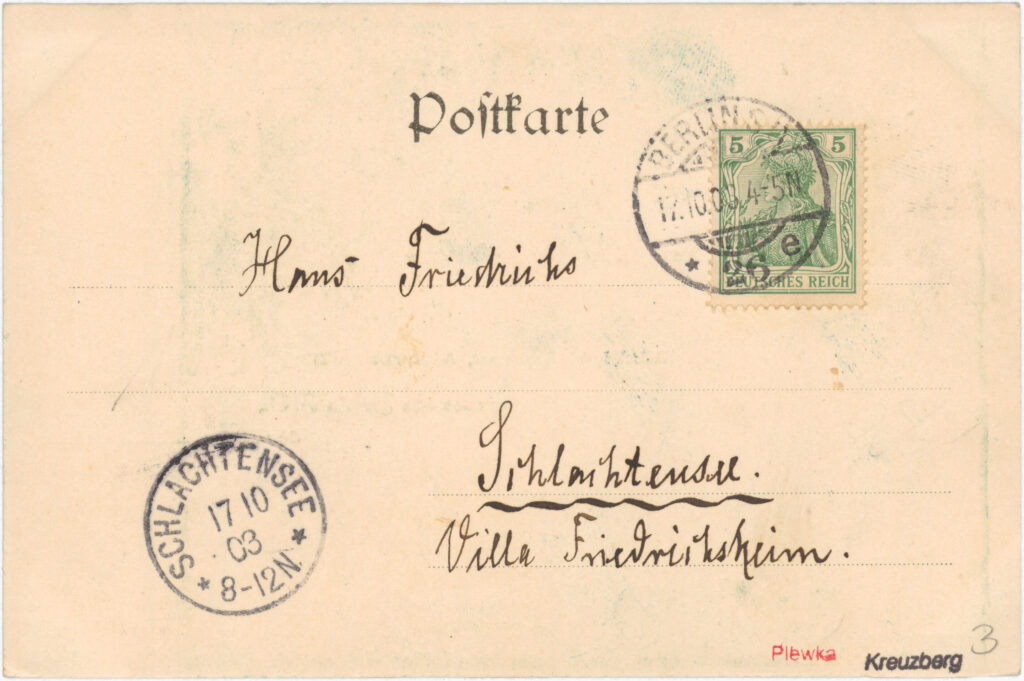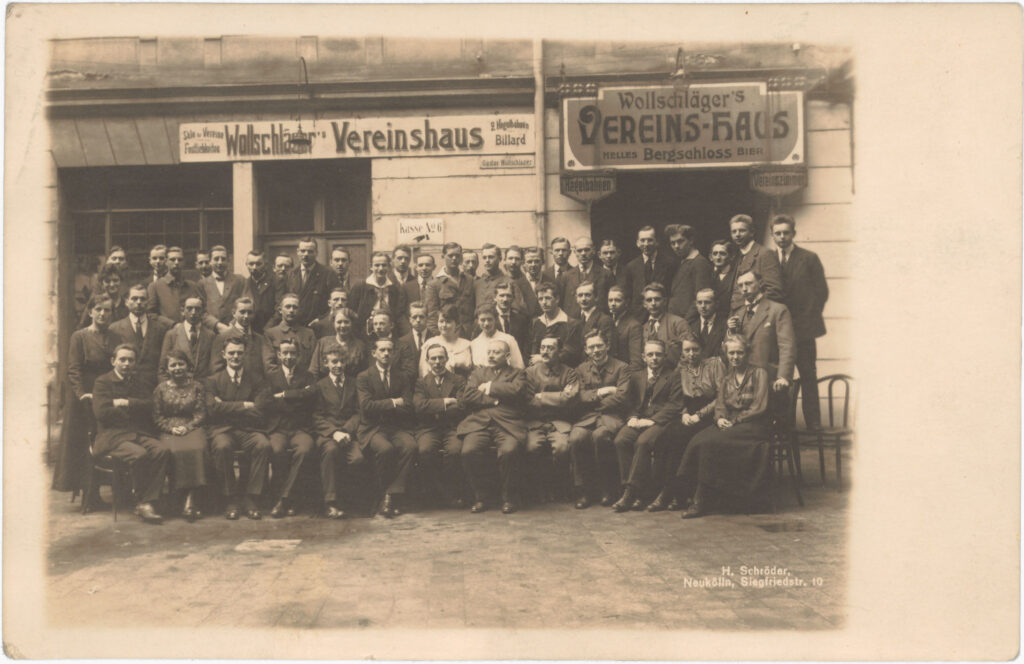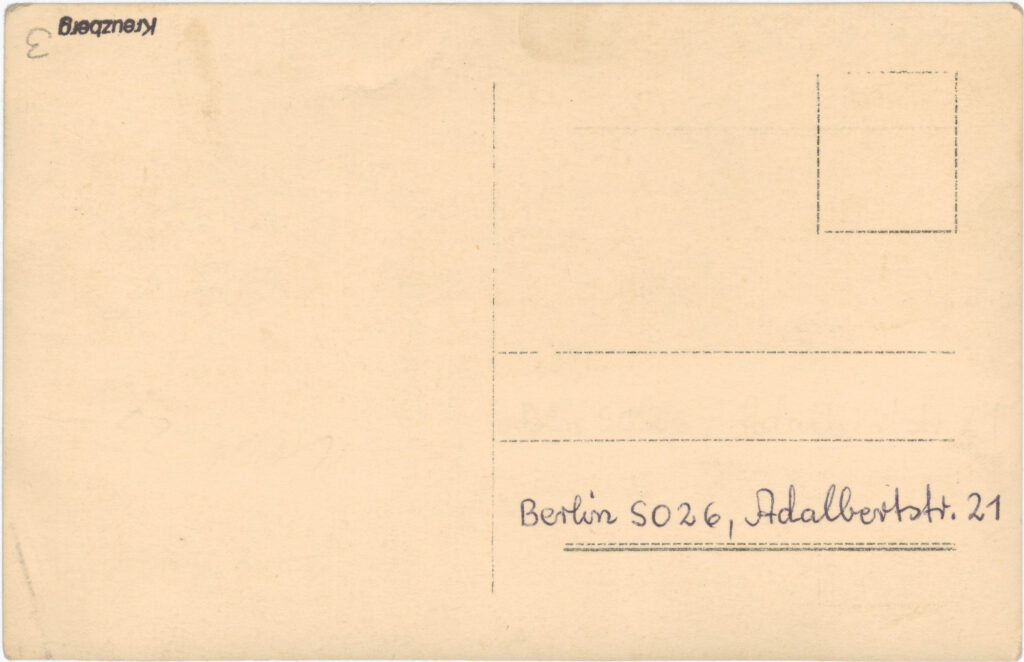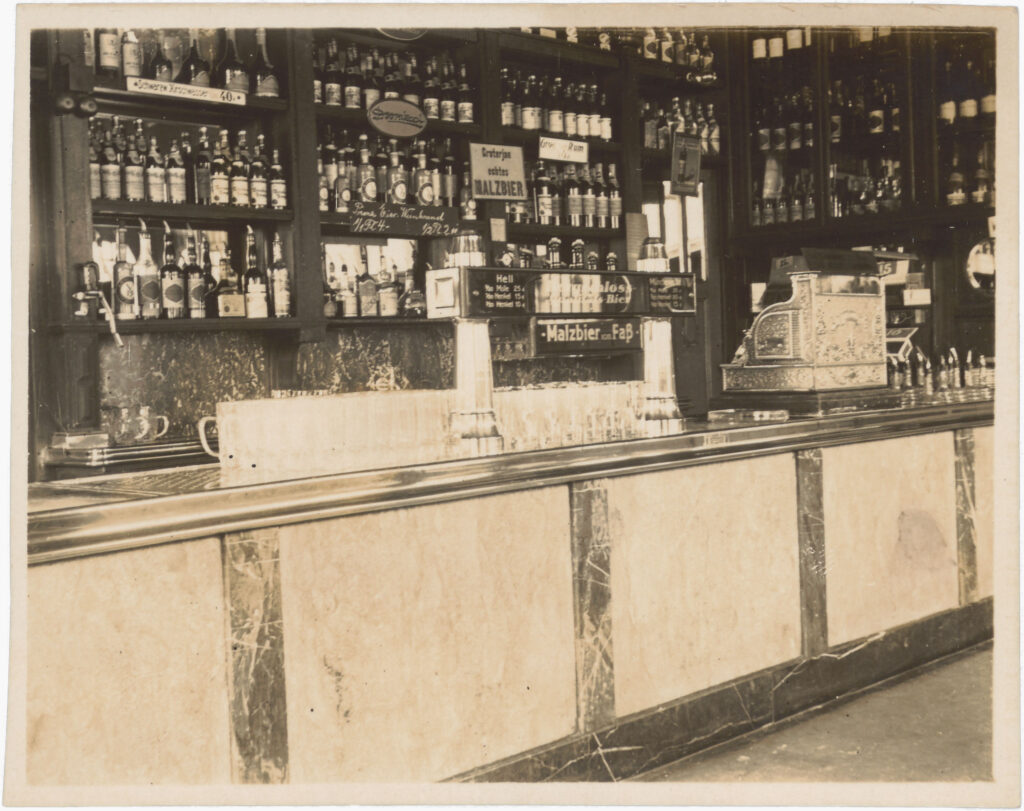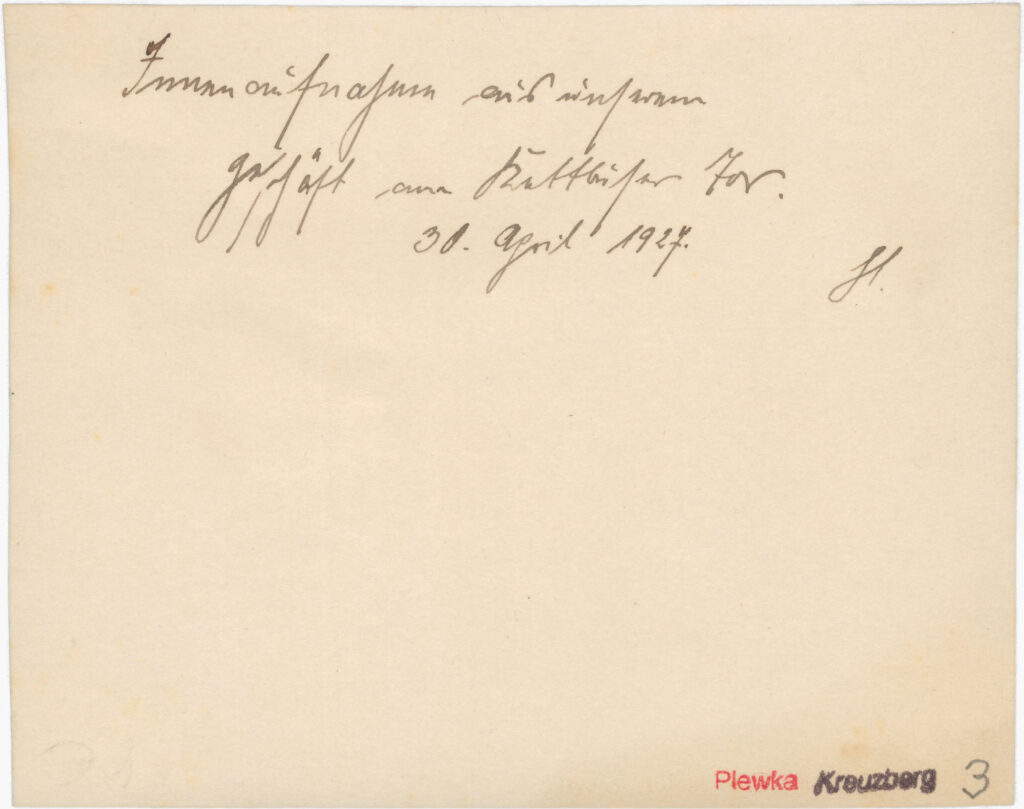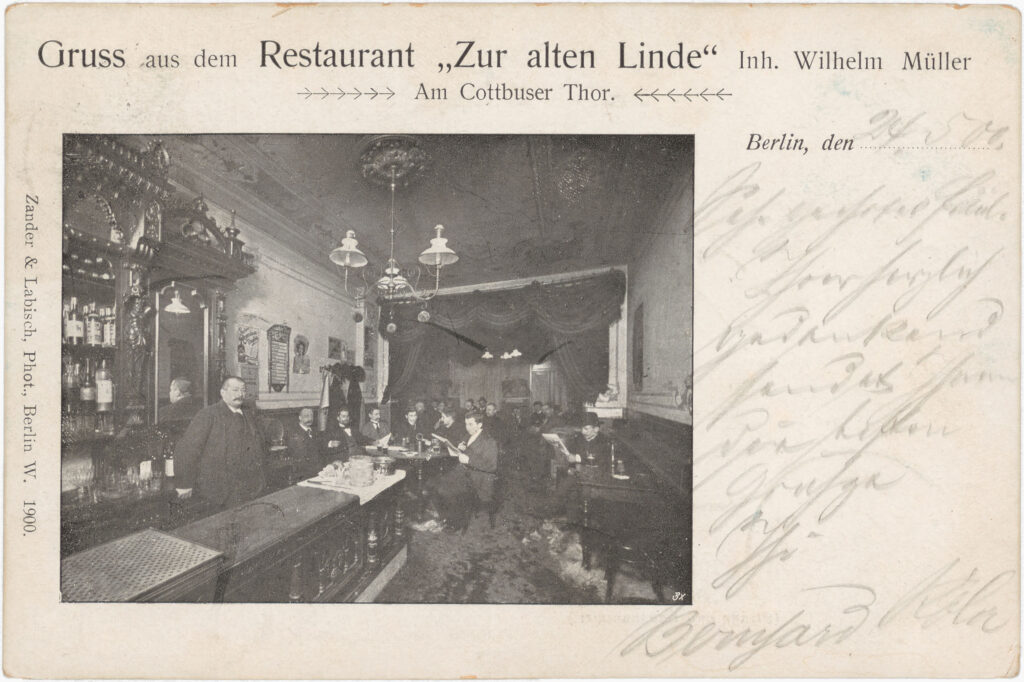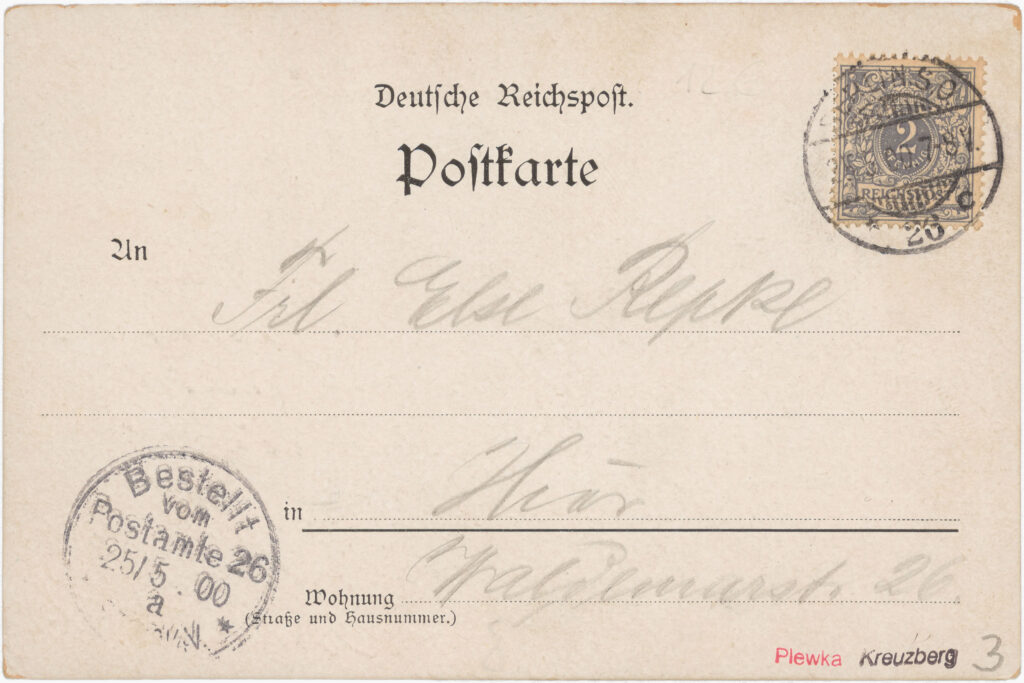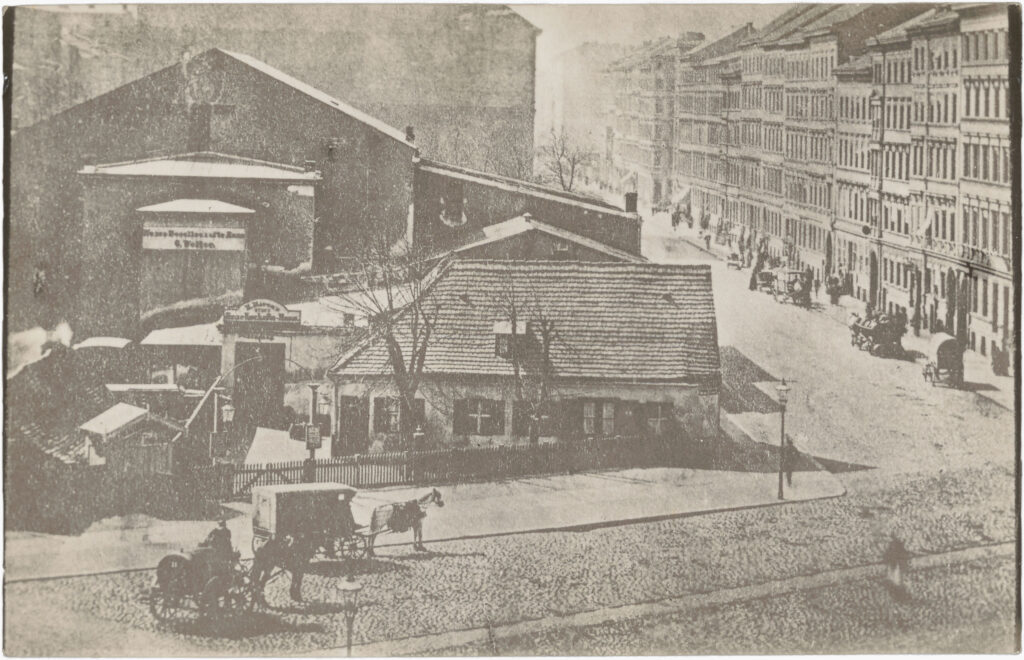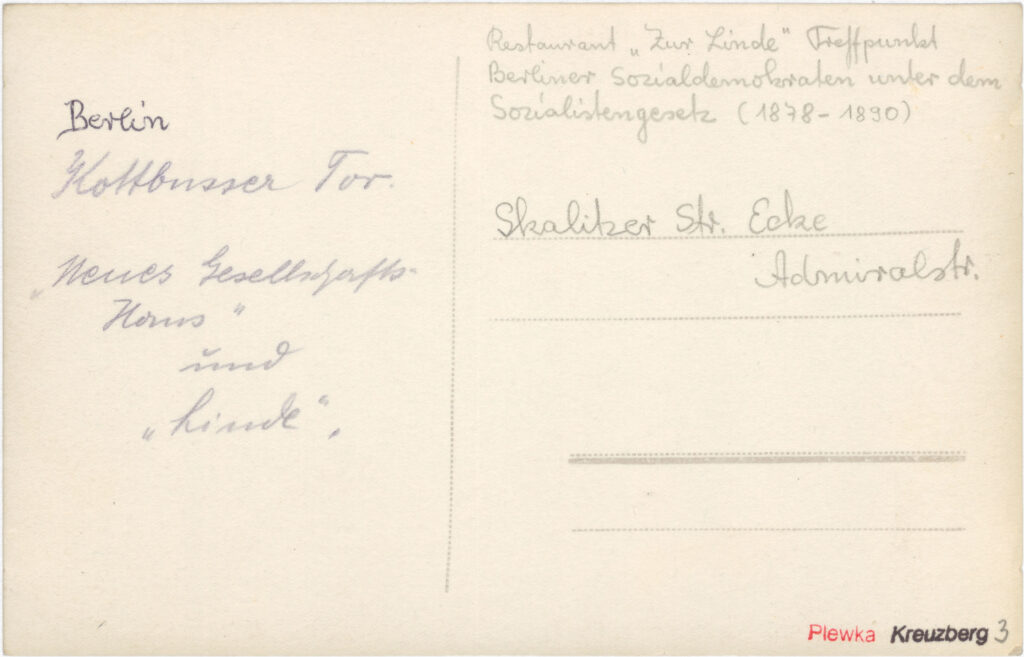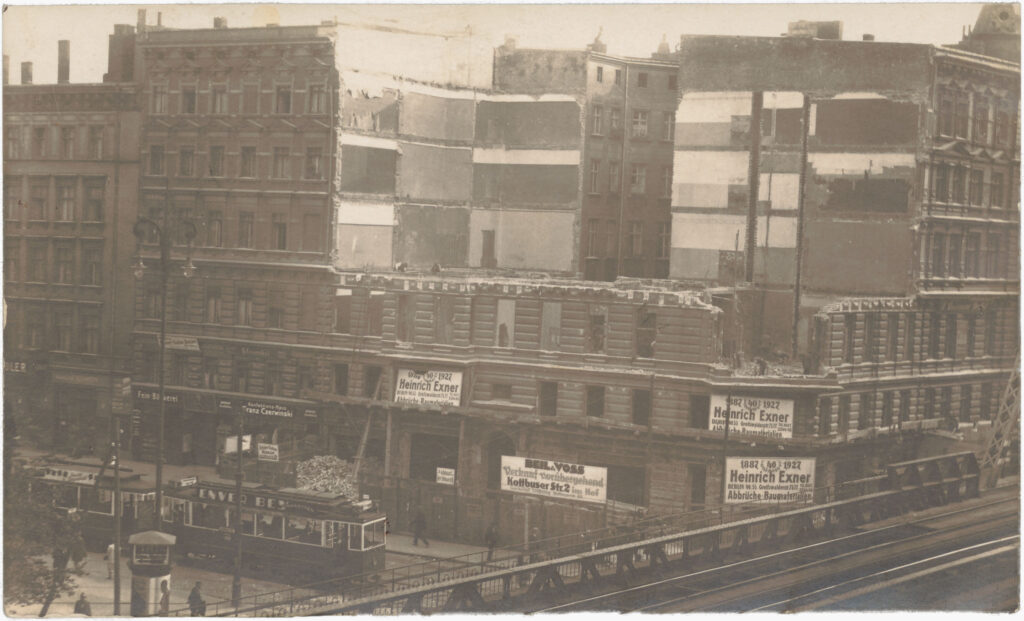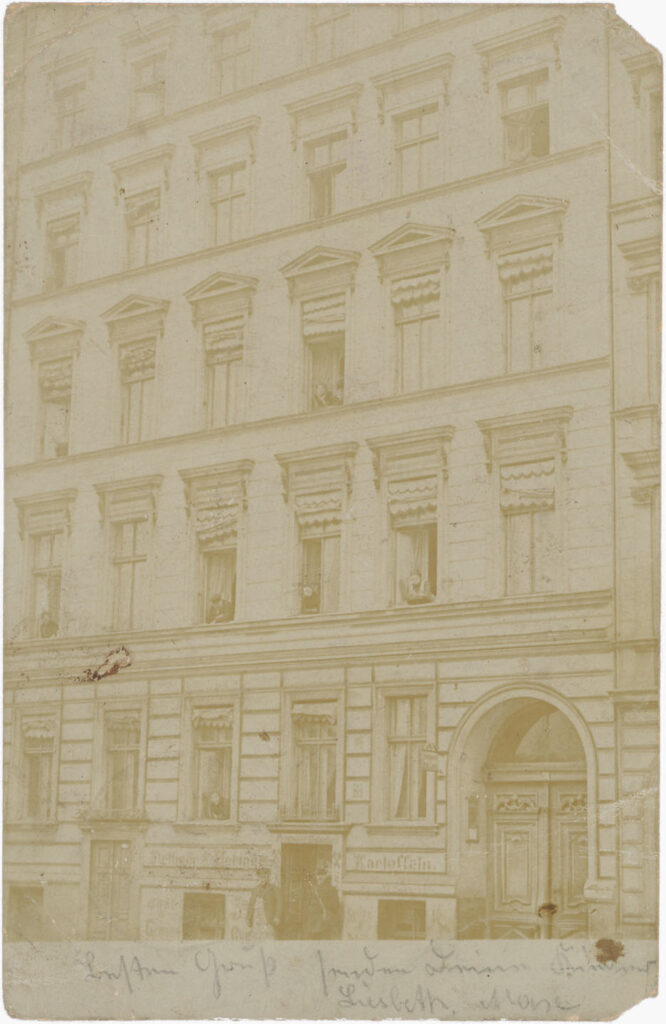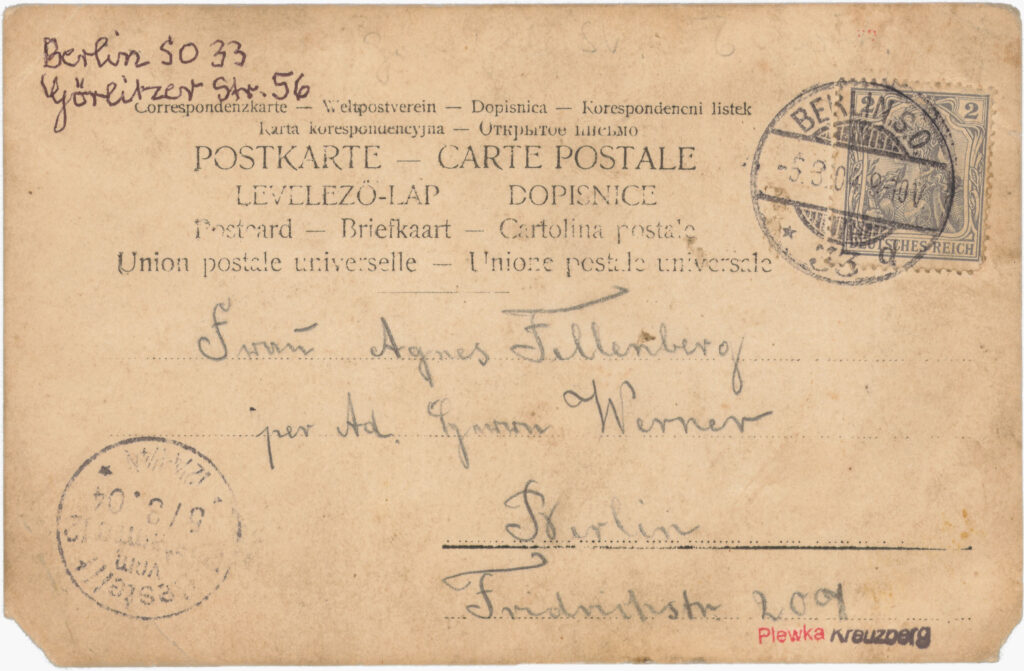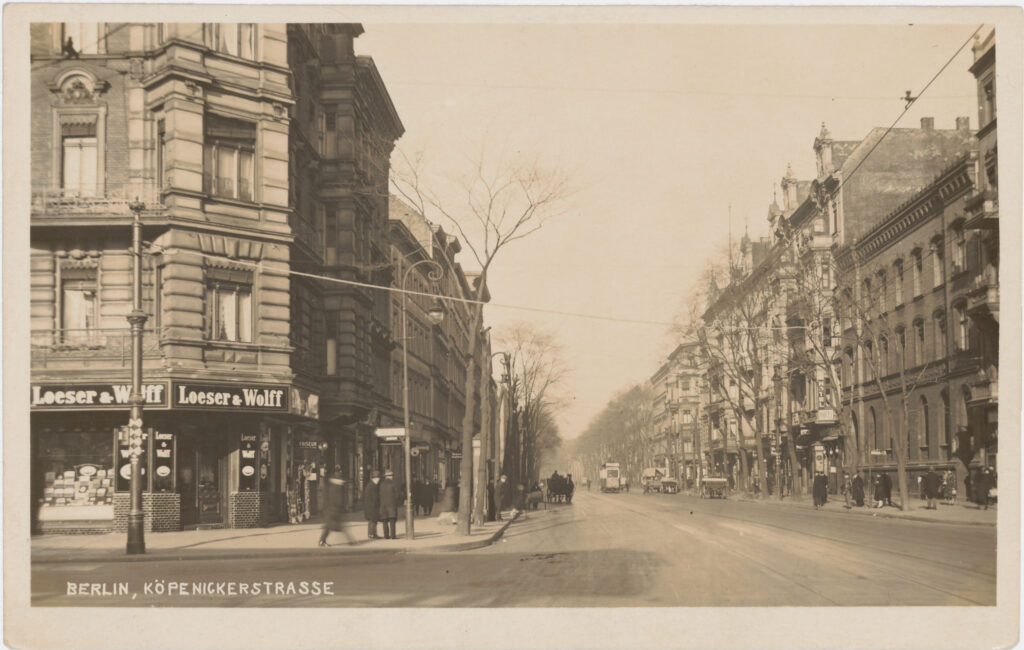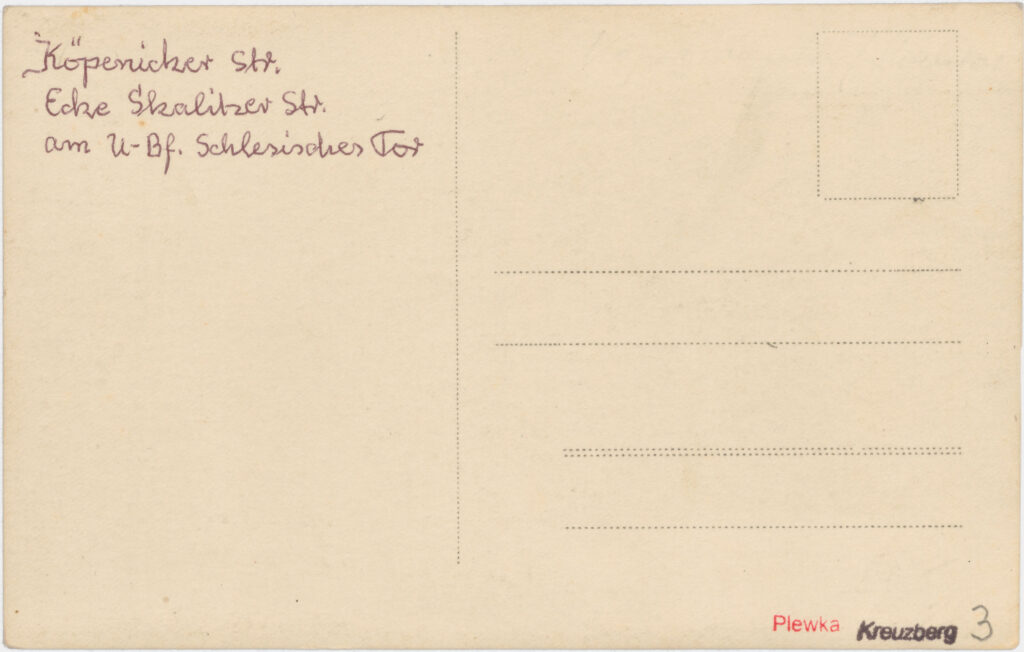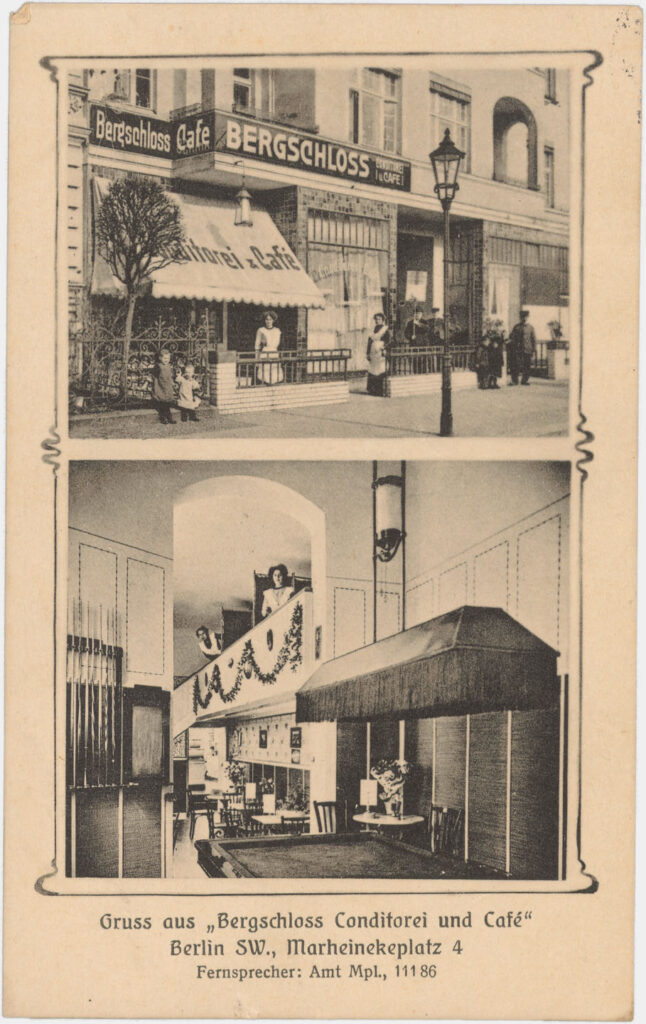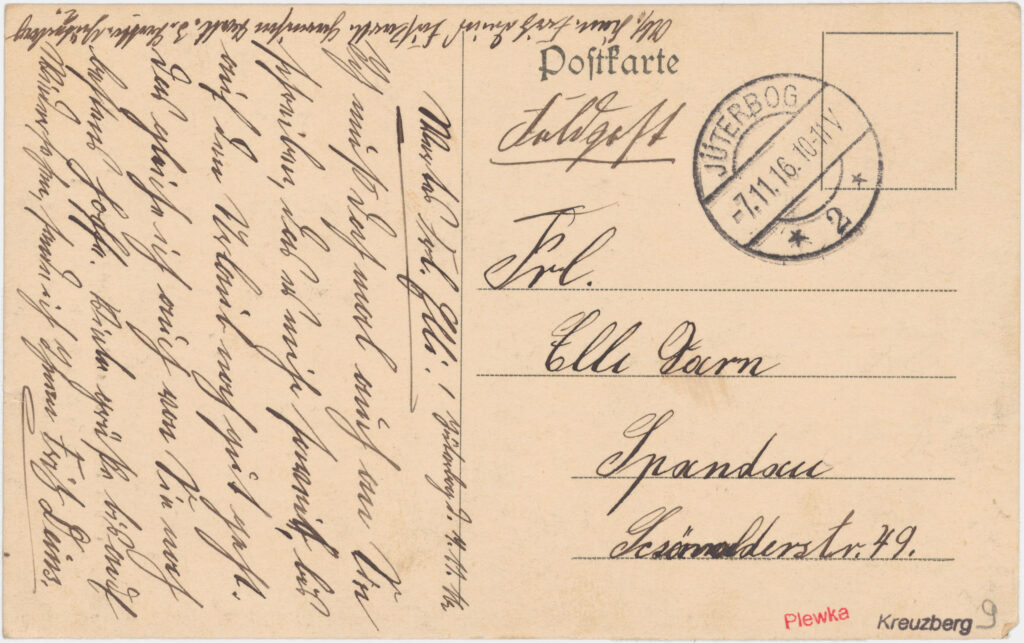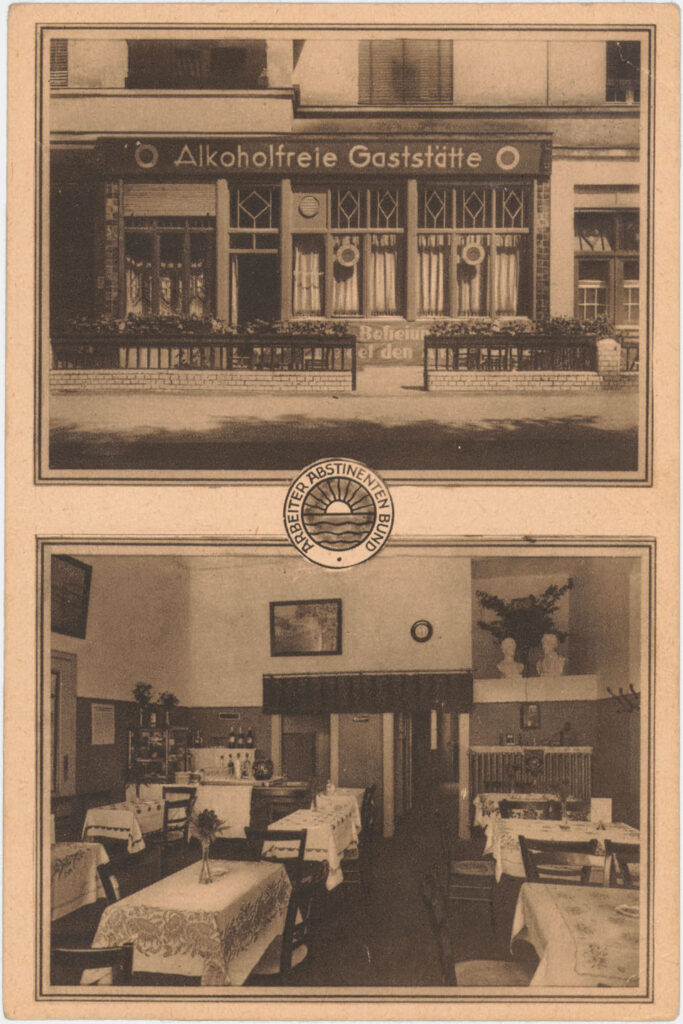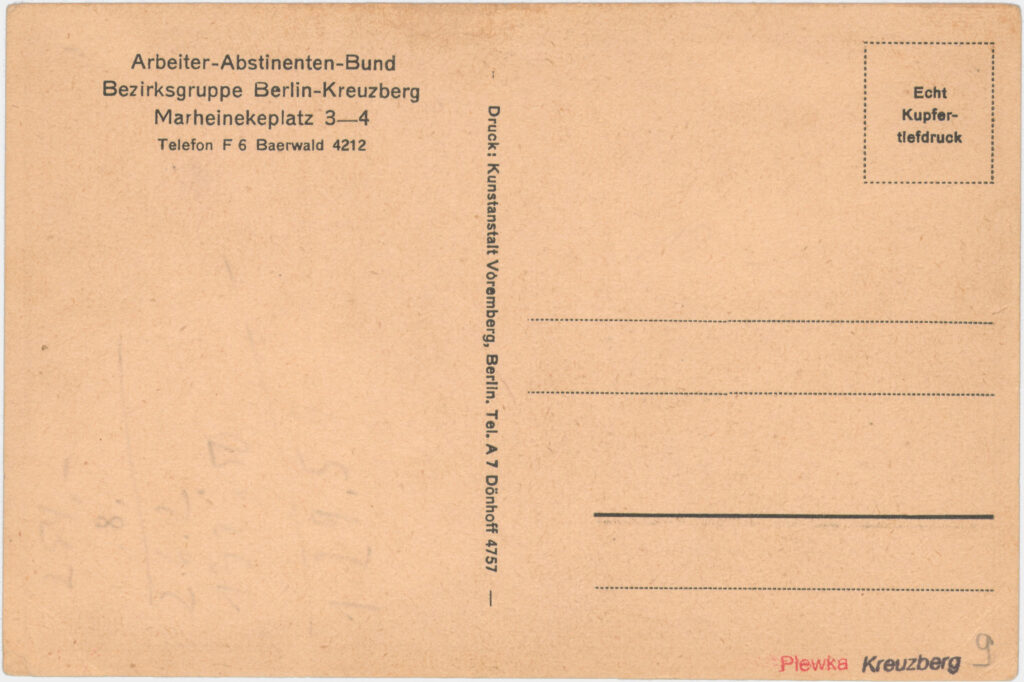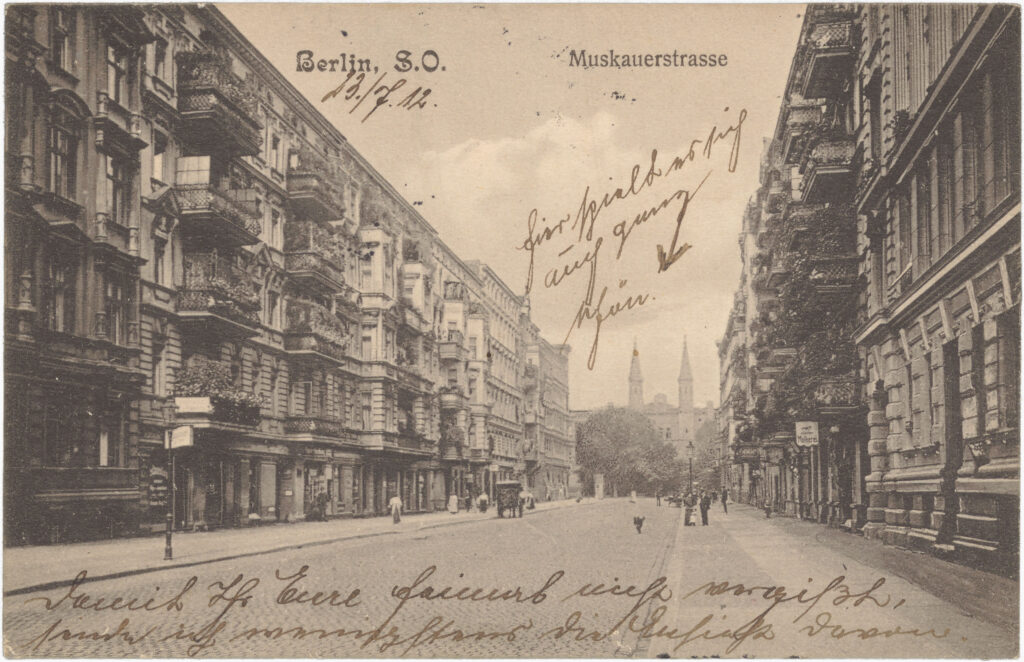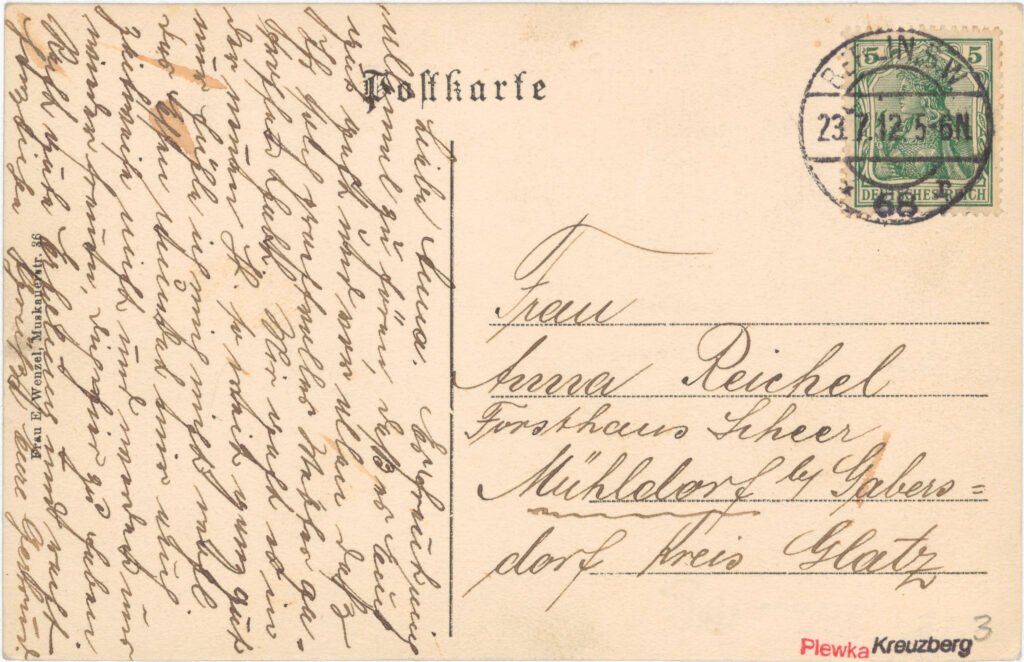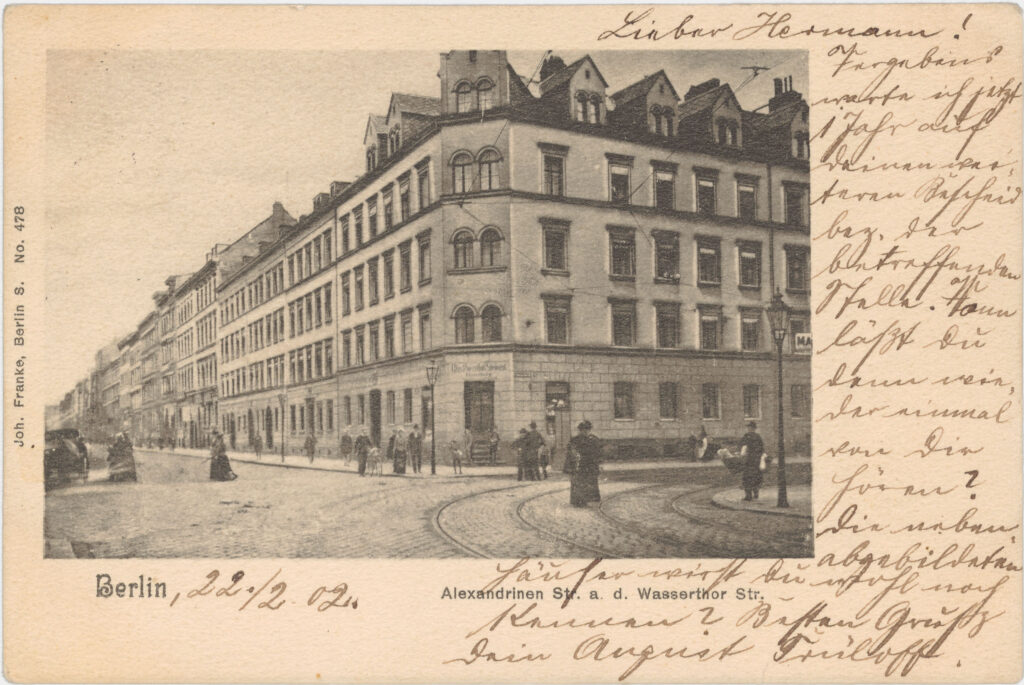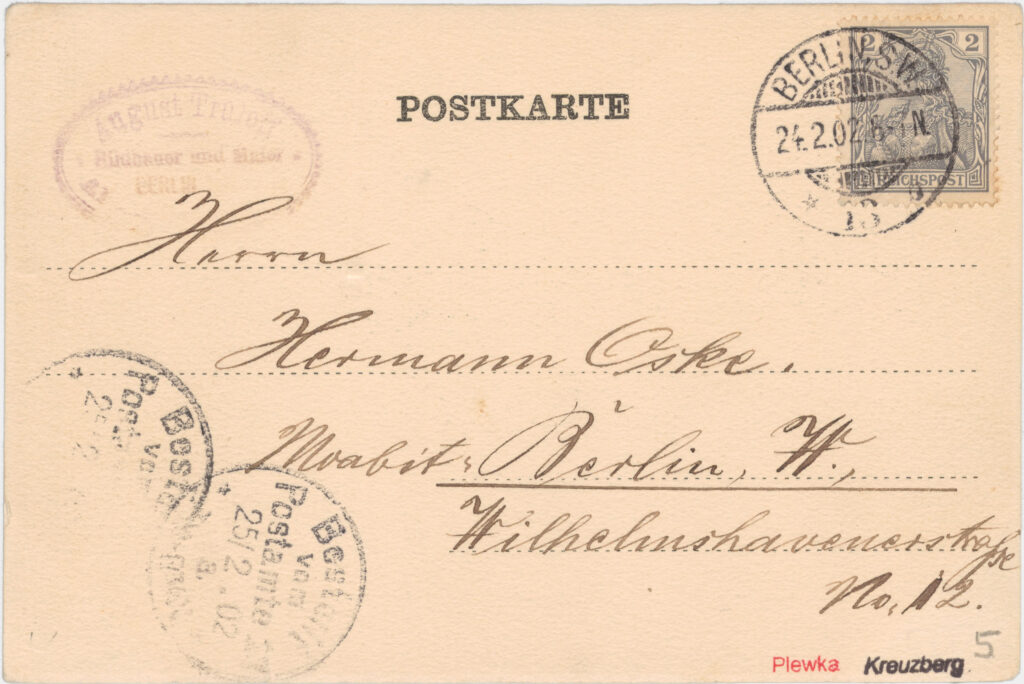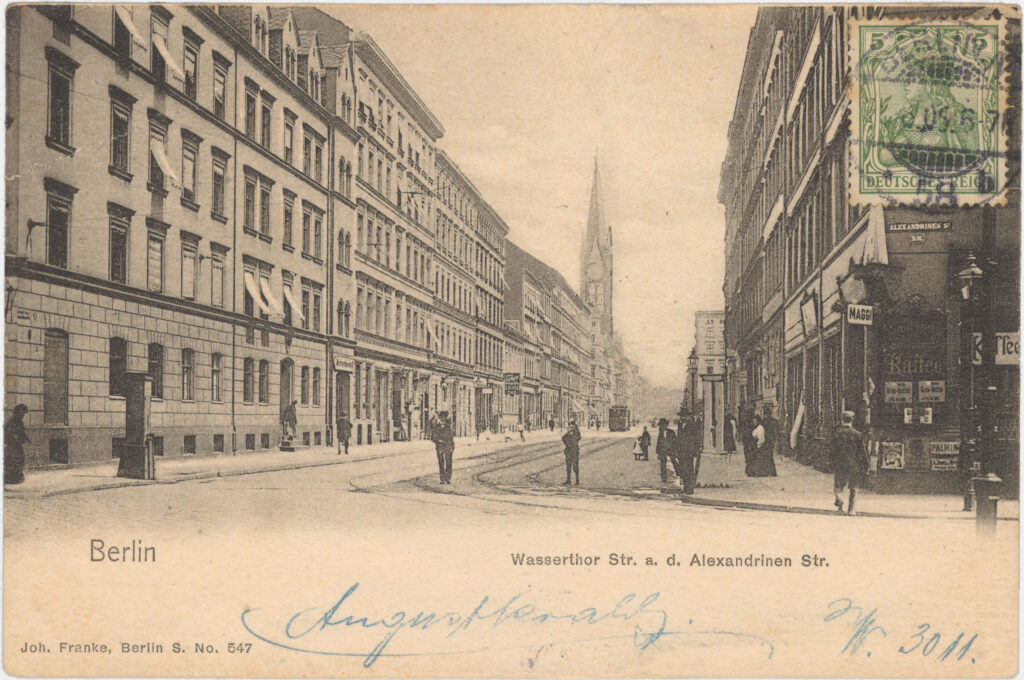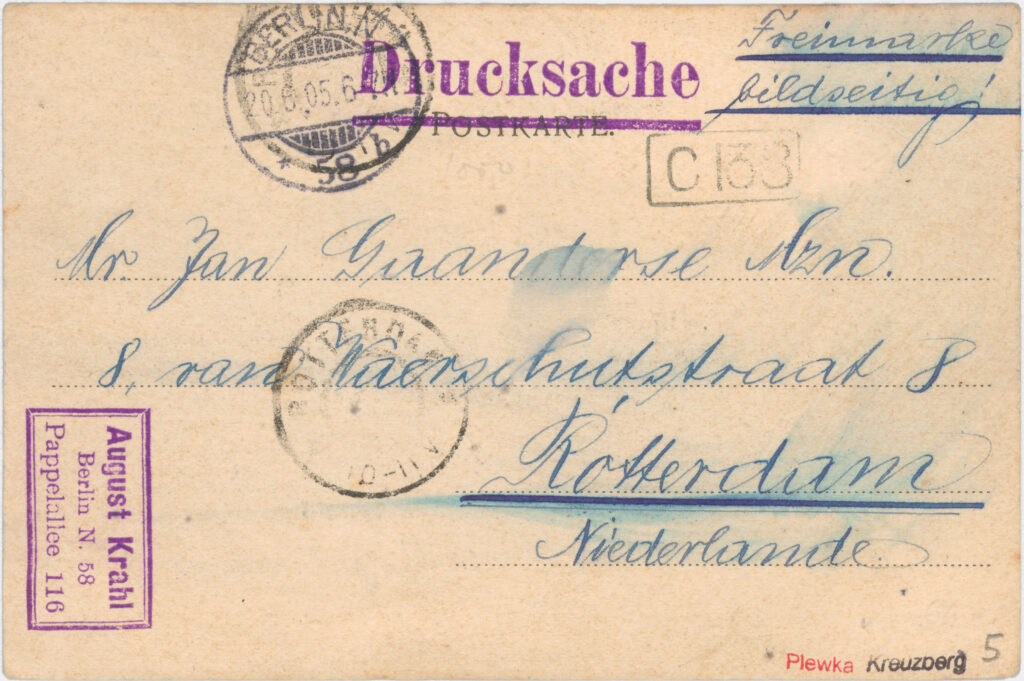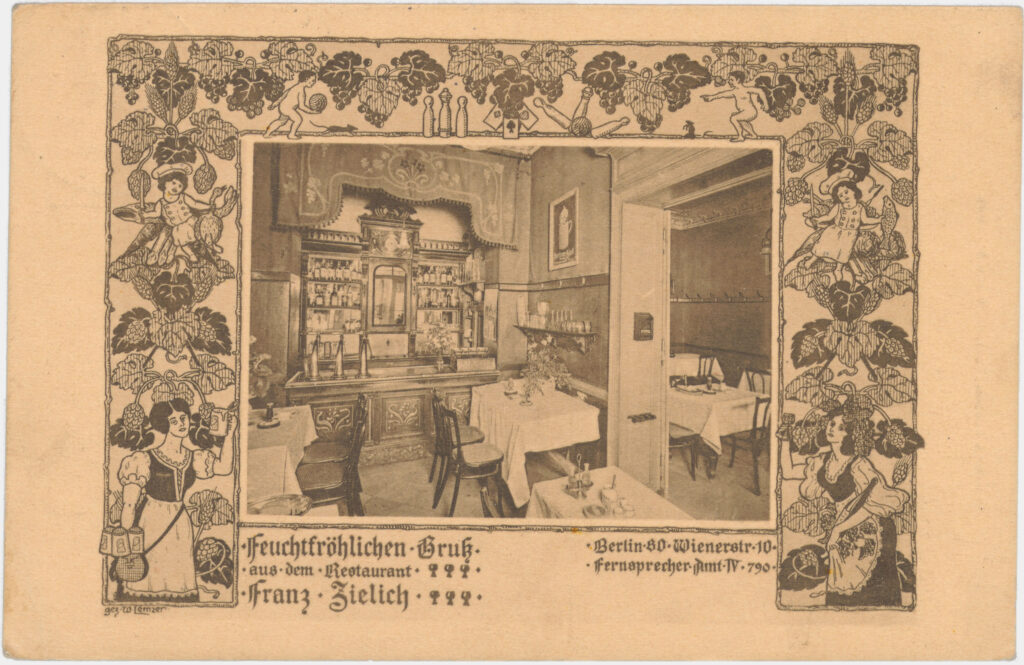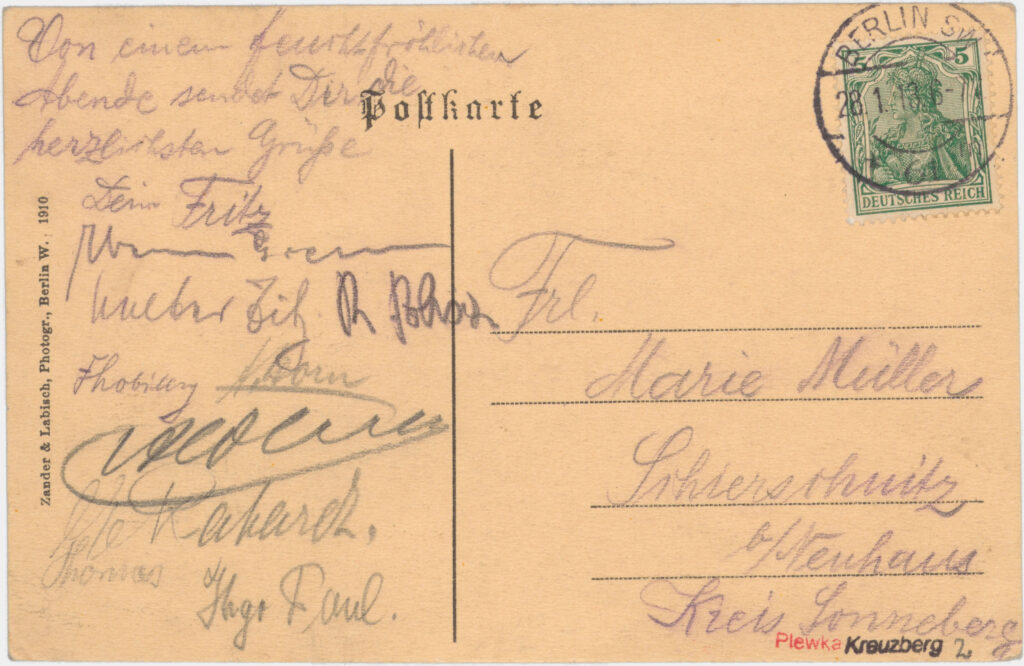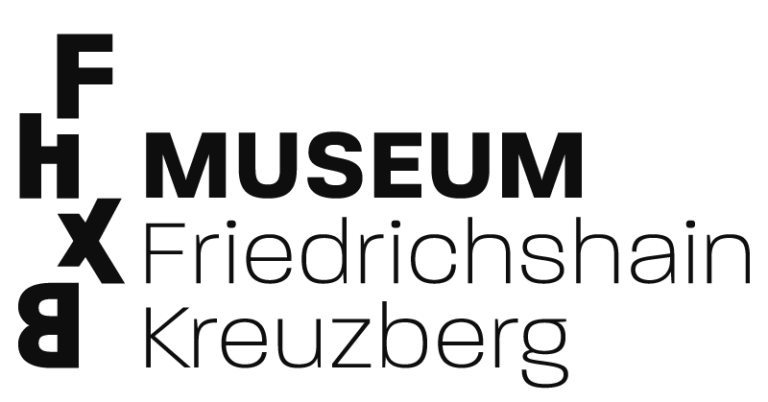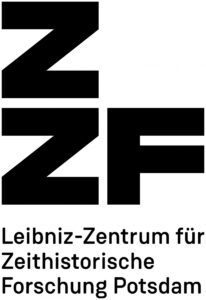COMMUNIST
WORKING-CLASS MILIEU
IN KREUZBERG
during the Weimar Republic
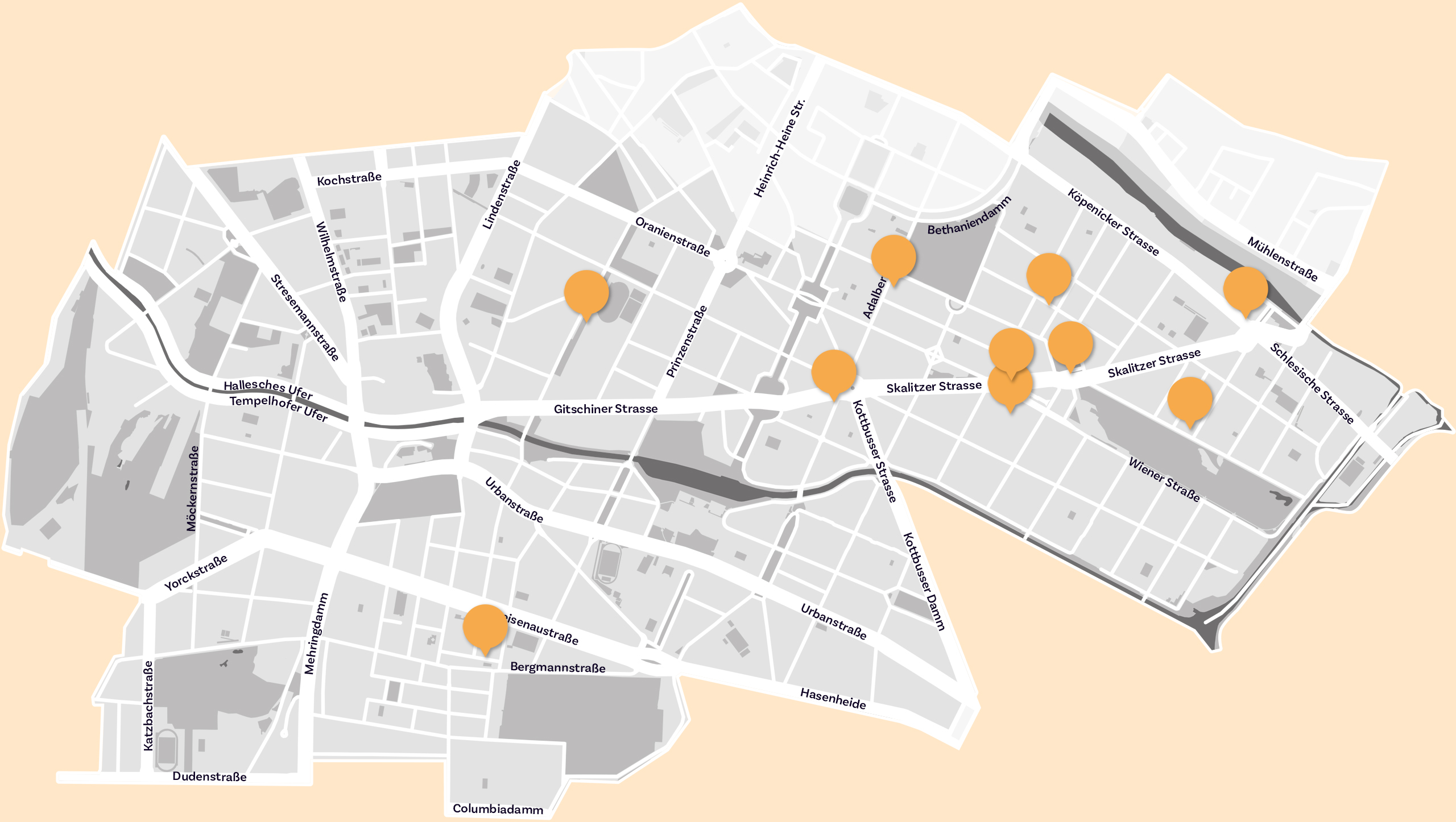
During the Weimar Republic, Kreuzberg was shaped by the workers’ movement. The SPD traditionally received the most votes in elections – until it was replaced by the Communist Party of Germany (KPD) as the strongest party in 1932. The KPD was anchored around Görlitzer Bahnhof and the neighborhood around Lausitzer Platz was popularly known as “Little Moscow” as an allusion to the strength of communist positions.
The workers’ movement had developed its own milieu with numerous meeting places since the 19th century – they were an important social space where workers from the neighborhood came together.
There were many pubs – so-called “Verkehrslokale” – which, in addition to serving as pubs, also served as meeting places for the organized workers’ movement and its sympathizers. Workers’ sports clubs also played an influential role, where members not only played sports together, but also educated themselves politically and culturally.
Proletarian youths, often with links to the workers’ movement, joined together in “wild cliques”. They fought street battles with the Sturmabteilung (SA), which also became stronger in Kreuzberg in the late 1920s. As the Nazis’ most indispensable fighting organization, the SA deliberately pushed the escalation through marches and targeted attacks.
Although the Peter Plewka collection contains only a few images of the communist meeting places, the postcards make it possible to discover traces of this history.
Verkehrslokale (pubs of working-class milieu)
”I always went to Gustav Hellmuth when I had time. That’s where I learned about Marxism and so on, without knowing much about it.”
Quote from Ilse Grubitz, who belonged to a communist youth group in the Weimar Republic at the age of 17. The “Hellmuth” public house had been a well-known communist meeting place at Görlitzer Str. 58 since the 1920s.
Public houses, neighbourhood pubs and party locales, typically all combined in one, played an important role for SPD and KPD members and other workers in the working-class districts–also as a temporary escape from the poor and cramped living conditions.
In addition to “Hellmuth”, influential communist bars in Kreuzberg included “Lorenz” in Nostitzstr., “Beckmann” in Möckernstr. and “Wollschläger” in Adalbertstr.
A police list from 1932 shows that there were at least 17 such pubs in Kreuzberg alone. By February 1933 at the latest, these pubs were closed with the “Emergency decree for the protection of the people and the state” issued by the National Socialist government.
“Wollschläger” was a communist meeting place during the Weimar Republic. In February 1933, the owner distanced herself from her former communist guests to the police. Around 1900, the time the photo was taken, it was a “meeting place for the philistines living here” in the eyes of one visitor.
HOUSING CONDITIONS
Catastrophic housing conditions characterized the district. In Kreuzberg there were many small one-room apartments in which a growing number of workers had to live. The housing shortage was so great at the end of the 1920s that even attics and basements were occupied––hygiene problems, illnesses, and a high infant mortality rate were the consequences. Public houses offered the opportunity to escape the cramped living conditions, at least temporarily.
Although Peter Plewka’s collection includes views of the workers’ quarters, the motifs do not provide any insight into the actual living conditions. Some postcards give an impression of the dense development and the housing shortage.
Workers’ sports clubs
On April 7, 1890, twelve young people founded the Fichte Berlin gymnastics club in Berlin-Friedrichshain. It initially remained unaffiliated and developed into the largest club of the rapidly growing German workers’ sports movement during the Weimar Republic. In contrast to other clubs, the focus was not on sporting competition, but on “educating the young proletariat to become healthy, strong, cheerful, energetic people”. The Lurich 02 heavy athletics sports club was founded in Kreuzberg in 1902 as an offshoot of Fichte Berlin. In addition to sport, there was also a wide range of cultural and political educational activities.
In the course of the conflict between the SPD and KPD, there were splits in the workers’ sports clubs in 1928. While most took the social democratic path, the communists dominated at Fichte Berlin. In 1931, Fichte Berlin was the largest of all German sports clubs. After the Reichstag fire, all workers’ sports clubs were banned by the Nazis on February 28, 1933.
On June 28, 1931, the “Freie Sportvereinigung Fichte” (free sports association) was established as a break-away from Fichte Berlin in a pub of the Deutscher Arbeiter-Abstinenten-Bund (German worker-abstinents association) Marheinekeplatz 3–4. Its members played football in the Katzbach stadium. The association was open for all workers’ sportspeople who opposed the sectarian politics of the KPD at the time.
“Wild cliques”
In the 1920s, there were dozens of self-organized groups of proletarian youths in Kreuzberg: the “Wild Cliques”. Their members supported each other under the difficult conditions of mass unemployment and poor housing conditions, played sports together, went on excursions and discussed politics. Most of the “Wild Cliques” came from the workers’ youth movement – but were organized in an anti-authoritarian way. There were often dual memberships with communist youth groups, but without ambitions to rise further in the communist party apparatus.
In Kreuzberg, the “Edelhirsche” were well known, who met in Lobeckstr. and whose motto was said to be “Where we see Latschers, there’ll be thrashing, and where we see Nazis, there’ll be mincemeat.” By “Latschers” they meant middle-class youth groups. The Wild Clique “Lustig Blut” frequently clashed with members of the Hitler Youth (HJ) and was suspected of being involved in the shooting of a member at Lausitzer Platz in July 1931. The police investigation against them was eventually dropped as it was proven that the youths had not been the perpetrators.
Battle for the Streets
The workers’ movement also carried out its political struggle in the streets. With the rise of the National Socialists, these confrontations became more violent. From 1929 onward, the SA organized demonstrative, tightly controlled marches in Kreuzberg and established its own pubs there, known as “Sturmlokale” (storm taverns). The confrontations between supporters of the workers’ movement and the Nazis intensified. Regular attacks occurred, sometimes resulting in deaths, such as that of the young communist Walter Neumann, who was shot by SA members on December 29, 1929, in front of the “Hellmuth” public house.
The first death in a confrontation between antifascists and Nazis in Berlin occurred on November 21, 1928. The worker Artur Kreisch, who was not involved but close to the KPD, was shot and died shortly after. The street intersection of Wassertorstr. and Alexandrinenstr., where the altercation took place, can be seen in the Plewka collection images; however, the photos were taken many years before the event.
SA STORM TAVERNS
At the end of the 1920s, SA storm taverns began to emerge. One of the most significant in Kreuzberg was located at Wiener Str. 10, known as the “Wiener Garten.” This was the meeting place for the particularly violent SA-Sturm 27. On December 29, 1929, an attack was launched from this tavern on the communist public house “Hellmuth,” resulting in the death of the young communist Walter Neumann.
After 1933, the terror intensified. The “Wiener Garten” became one of the early “wild” concentration camps, where residents of the neighborhood were detained and tortured.
